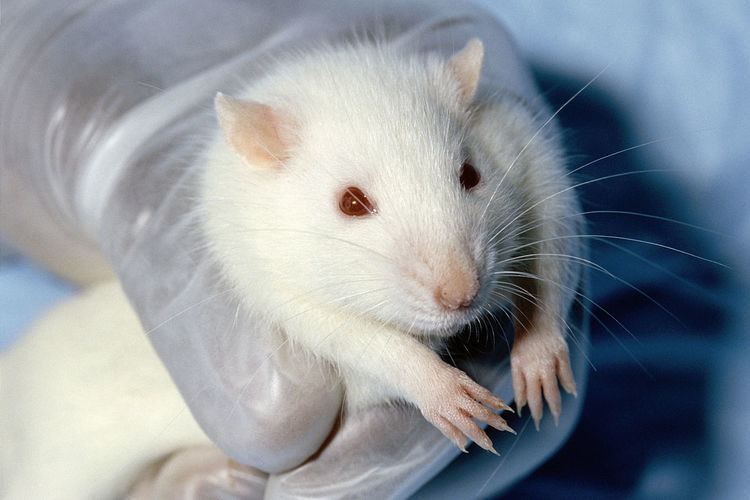 | ||
A great ape research ban, or severe restrictions on the use of great apes in research, is currently in place in the Netherlands, New Zealand, the United Kingdom, Sweden, Germany and Austria. These countries have ruled that chimpanzees, gorillas, and orangutans are cognitively so similar to humans that using them as test subjects is unethical. Austria is the only country in the world where experiments on lesser apes, the gibbons, are completely banned too.
Contents
New Zealand
New Zealand granted strong protections to all the great ape species in 1999, but these protections have not been explicitly recognized as rights. The use of great apes is now forbidden in research, testing or teaching.
United States
The United States is the world's largest user of chimpanzees for biomedical research, with approximately 1,200 individual subjects currently in U.S. labs. On December 15, 2011, the U.S. Institute of Medicine (IOM) declared in a report) that ‘most current use of chimpanzees for biomedical research is unnecessary,’ and recommended to curtail government-funded research on humans' closest relative. On the same day Francis Collins, director of the National Institutes of Health (NIH), announced that he had accepted the recommendations and will develop an implementation plan which includes the formation of an expert committee to review all submitted grant applications and projects already underway involving the use of chimpanzees. Furthermore, no new grant applications using chimpanzees will be reviewed until further notice. On 21 September 2012, the NIH announced that 110 chimpanzees owned by the government will be retired. The NIH owns about 500 chimpanzees for research, and this move signifies the first step to wind down its investment in chimpanzee research, according to Collins. Currently housed at the New Iberia Research Center in Louisiana, 10 of the retired chimpanzees will go to the chimpanzee sanctuary Chimp Haven while the rest will go to Texas Biomedical Research Institute in San Antonio. However, concerns over the chimpanzees' status in the Texas Biomedical Research Institute as ‘research ineligible’ rather than ‘retired’ prompted the NIH to reconsider the plan. On 17 October 2012 it announced that as many chimpanzees as possible will be relocated to Chimp Haven by August 2013, and that eventually all 110 will move there.
On 22 January 2013, an NIH task force released a report calling for the government to retire most of the chimpanzees under U.S. government support. The panel concluded that the animals provide little benefit in biomedical discoveries except in a few disease cases which can be supported by a small population of 50 primates for future research. It suggested that other approaches, such as genetically altered mice, should be developed and refined instead. On 13 November 2013, Congress and the Senate passed ‘The Chimpanzee Health Improvement, Maintenance and Protection Act’, which approved funding to expand the capacity of Chimp Haven and other chimpanzee sanctuaries, allowing for the transfer of almost all of the apes owned by the federal government to live in a more natural and group environment. The transfer is expected to take up to five years, at which point all but 50 chimpanzees will have been successfully ‘retired’.
On 11 June 2013, the US Fish and Wildlife Service proposed to list captive chimpanzees as endangered, matching its existing classification for wild chimpanzees. Until the Fish and Wildlife proposal, chimpanzees were the only species with a split listing that did not also classify captive members of the species as endangered. If the proposal gains final approval, it is unclear what effect it would have on laboratory research.
Two years later, on 12 June 2015, the USFWS completed the proposal and listed all chimpanzees, captive and wild, as endangered.
In January 2014, Merck & Co. announced that the company will not use chimpanzees for research, joining over 20 pharmaceutical companies and contract laboratories that have made the commitment. As the trend continues, it is estimated the remaining non-government owned 1,000 chimpanzees will be retired to sanctuaries around 2020.
United Kingdom
Announcing the UK’s ban in 1986, the British Home Secretary said: "[T]his is a matter of morality. The cognitive and behavioural characteristics and qualities of these animals mean it is unethical to treat them as expendable for research." Britain continues to use other primates in laboratories, such as macaques and marmosets. In 2006 the permanency of the UK ban was questioned by Colin Blakemore, head of the Medical Research Council. Blakemore, while stressing he saw no "immediate need" to lift the ban, argued "that under certain circumstances, such as the emergence of a lethal pandemic virus that only affected the great apes, including man, then experiments on chimps, orang-utans and even gorillas may become necessary." The British Union for the Abolition of Vivisection described Blakemore's stance as "backward-looking."
On 7 February 2014 the UK Department of Health released a policy paper outlining the ‘3R’ (replacement, refinement and reduction) strategy to reduce animal testing in research and develop in biosciences. Using new non-animal technologies such as tissue engineering, stem cells, noninvasive imaging and mathematical modeling, the press release stated, the benefits will include not only improvement in animal welfare but also reduction in cost for the industry. The latter derives from the potentially higher successful rate using these cutting-edge technologies in early drug development while results from animal studies sometimes fail to duplicate in human.
